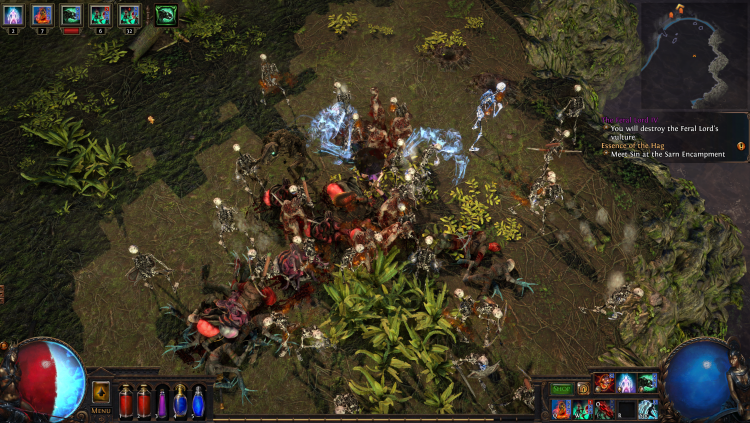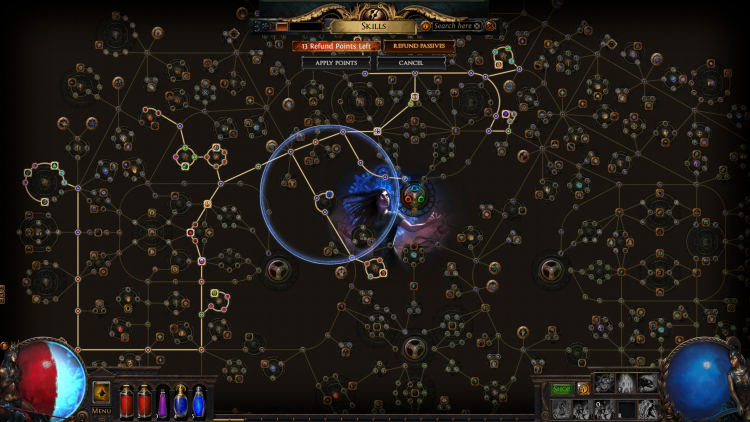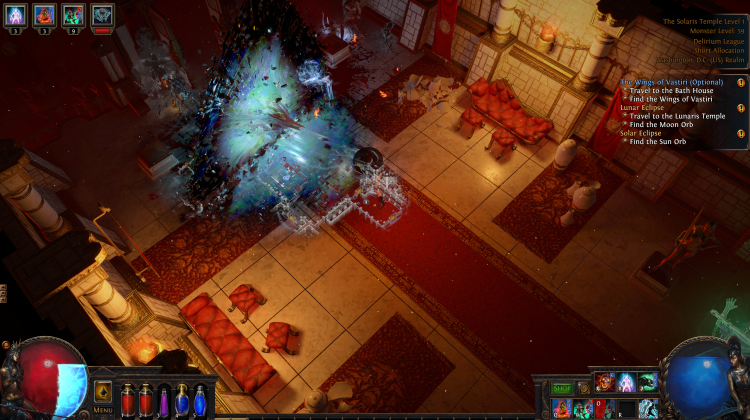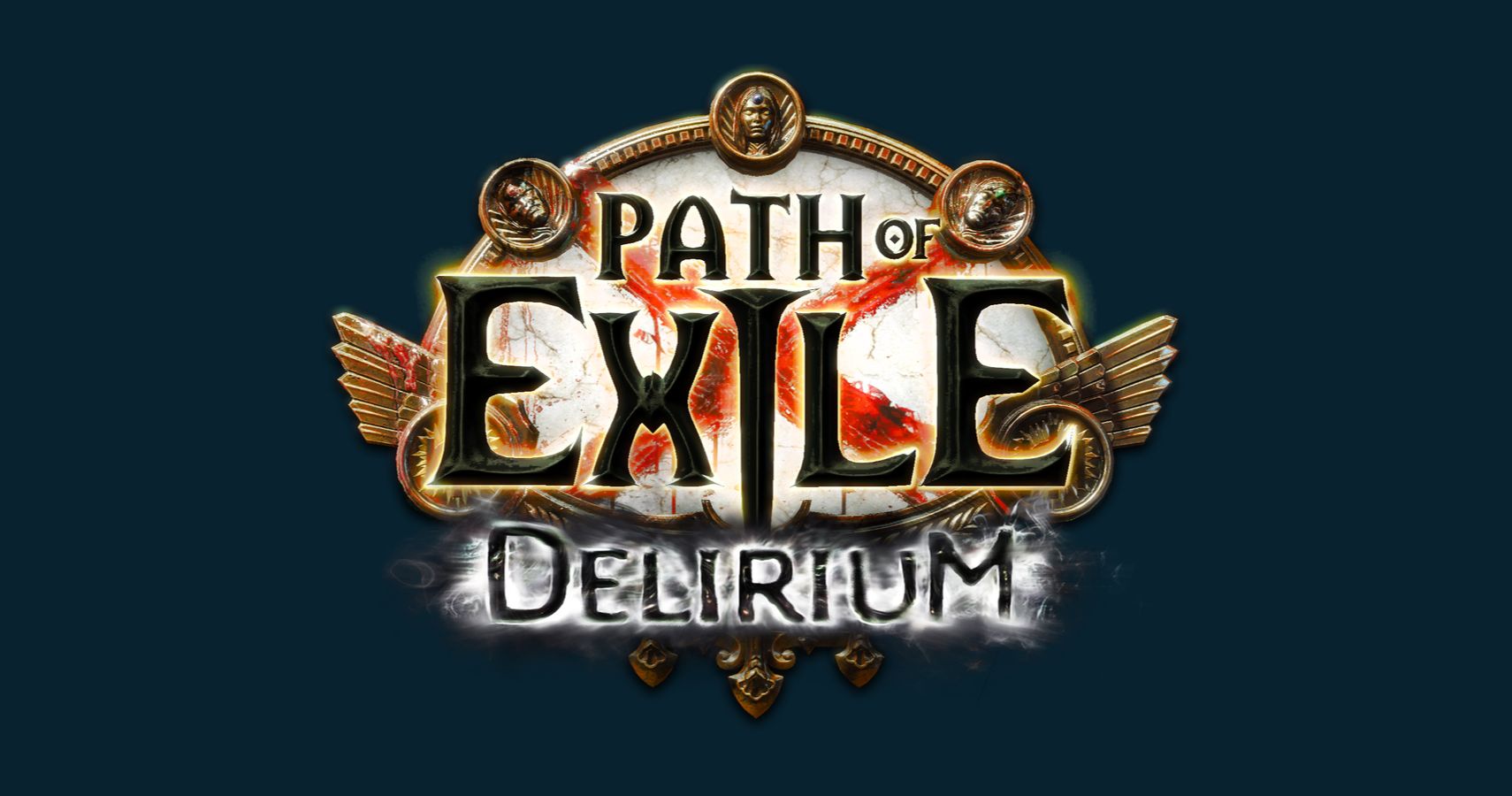At Goonhammer, our passion for games extends well beyond the tabletop. Each week, Jonathan “Crion” Bernhardt reviews video games, even the ones that aren’t Warhammer-related. In today’s review, he’s talking about Path of Exile, which recently received a major update.
A month or so ago — which feels like many lifetimes now — I was perhaps forty minutes into playing Wolcen: Lords of Mayhem when I realized I’d much rather be playing Path of Exile.
To be clear, this was well before all the bugs and disappointments of that title set in, though it was also just after a chafingly long tutorial section that spent much too much time with trite character writing. One of the many ways in which Path of Exile is best-in-class is that the plot, for the most part, can stay entirely out of your way — there are only one or two pre-rendered cutscenes in total, easily skippable, and you can motor your way through whatever NPC dialogue is thrown at you when you’re running Acts 1 through 10 (yes, 10) for the fortieth or fiftieth time, because the game never stops and throws you into an in-engine cutscene that isn’t a boss fight introduction. The game is very simple about what its loop is: you control a character with an inventory and an isometric camera who runs around a field, and you click on things to you die, and all subsequent amendments and improvements on this loop involve various ways of increasing the number of things that die per click, until at the highest levels of mastery you don’t even need to click at all. Games with this particular presentation and gameplay loop are called “Action RPGs” or “ARPGs” for a myriad of evolving-language reasons in the industry, despite involving some of the least actual action possible when you’re doing them right; once you’ve mastered a truly well-done ARPG, it’s much more akin to a walking simulator, or a clicker with pretty graphics.
Path of Exile is the best Action RPG ever made, and as far as I’m concerned it isn’t particularly close. I have a great amount of affection for Titan Quest and its spiritual successor Grim Dawn, but both are kind of wonky mechanically and weirdly static in their build progressions; the leader in the class is of course the Diablo series, but it peaked at Diablo II — the title that Path of Exile bases most of its mechanics and development theory on; we’ll get into that later — and Diablo III, while flashy and fun by the time the Reaper of Souls expansion came out, is just a flatly inferior experience that took a lot of work to even keep second-place status behind PoE, which immediately surpassed it upon launch in October 2013.

The most important difference between the two games actually has nothing to do with how they play in the first-order whatsoever; it has to do with their economies. While Diablo III rather famously launched with a real money “auction house” system that throttled loot drop rates to force uniques into actually being, well, kind of unique — I played through the entire story campaign in Diablo III the night it launched through all of its server issues and never saw a single legendary item; even Diablo themselves only dropped a couple crappy rares — Path of Exile built off of the ideas underpinning the actual player-to-player economy that developed over Battle.Net for Diablo II. For those that don’t recall, Battle.Net ladder players for Diablo II were forced to scrape together a barter economy with complicated valuation tables, and the market eventually settled on, as currency, a bunch of rare runes and (much more famously) the unique ring Stone of Jordan. For most of Diablo II’s life as a viable, bustling online multiplayer community, SoJs were the gold standard; literally, the hard currency underlying all fiat transactions. This was for good reason — a ring that gives +1 to all skills is useful for every endgame build for every class, making them a universal form of economic communication.
Path of Exile embraces this sort of barter economy from a foundational level; unlike pretty much every other modern entry into the ARPG genre, there is no gold or gold-like currency. Even trades with NPC shops are done entirely through escalating tiers of crafting materials; the lowest possible bit of trade currency is an Identify Scroll, then a Town Portal Scroll, then the set of lower-tier crafting mat orbs that affect normal and magical items, then the tier of orbs that modify the properties of items you want to keep, and then finally at the top, the orbs that change fundamental properties of items or make top-tier, endgame items better. This is a canny move both in terms of making Path of Exile feel fundamentally different from its competition and in keeping community engagement high in a game that is free to play and relies heavily on engaged, happy players spending real money in the cosmetics shop to pay its bills. (Note that Grinding Gear Games was bought by Tencent in 2018 and Path of Exile is so phenomenally successful that a sequel and a mobile version were both announced at their first convention, Exilecon, in November 2019.)
Some of the most valuable items to have in Path of Exile won’t really come as a surprise to veterans of the Diablo franchise; there are plenty of high-end unique items with unique bonuses that change the way certain abilities or builds play. However, Path of Exile and Diablo III rather markedly diverged in endgame buildcrafting theory; Diablo III prefers gamechanging legendary items backed up by incredibly powerful legendary sets of armor which, when all equipped, stack a number of crazy bonuses all their own, augmenting and changing how your class’s innate abilities work in the game. Path of Exile, on the other hand, embraces socketed gems with attached modular abilities…and the sphere grid.

That’s the major underlying difference between the two games as actual games: where as Diablo prefers to make abilities a function of character class, such that only the Paladins/Crusaders have access to Auras or the Assassins/Demon Hunters have access to various traps, character class in Path of Exile merely represents an aesthetic for the paper doll avatar in the world with which you’re playing dress up — the goth girl Witch, the dashing rogue Duelist, the lithe jock Archer — and a starting place on the sprawling sphere grid through which all passive leveling upgrades are selected. These locations are in theme; the Witch starts closer to spell, mana, and minion upgrades, the Duelist closer to the dual-wielding melee passives, and the Archer closer to the ranged and attack speed bonuses, for instance. There are minor nodes that offer one small, non-unique buff that will snowball over time as you collect more of them; there are major nodes that offer significant arrays of themed bonuses that surpass the value of any number of the minor nodes it took to reach them; and there are the capstone nodes that fundamentally change the way your character behaves mechanically, usually involving some sort of tradeoff that only makes sense in the context of a larger, more coherent build.
As for what abilities your characters have — summoning zombies, throwing fireballs, various passives that reserve a portion of your mana, and so on — these are controlled through gems that socket into your character’s items and gain experience as you use them. Better items have more sockets, better socketed items have more links between the sockets, and the best items in the game have six sockets, all connected, allowing you to set a base skill and then modify it five additional times with supplemental gems, improving its abilities and damage generators. This is how you achieve the endgame builds where your character walks through the world and at the single press of a button, everything on screen dies.
It’s worth talking about the world of Path of Exile as well. As mentioned above, everything about the story is completely skippable just by leaving the dialogue prompts — you’ll never run into long forced cutscenes, not even ones you have to skip; it’s very much like Diablo II, where there’s the topic you have to talk about to advance, and then a bunch of optional topics for flavor. But being a New Zealand studio, Grinding Gear Games has clearly based a lot of the fantasy-world lore for their title around the devastation of the Maori at the hands of the British Empire (the titular Exile in question is to a white colonial empire’s failed island outpost prison holding far across the sea, if that sounds vaguely familiar to real life), while neither reducing the Maori-inspired peoples to a one-to-one stand-in for the Maori nor some sort of noble savage trope. It’s a rather grim game, and it permits everyone to be grim together within it. And if you find it too grim — I got a bit tired of the over-the-top nature of the later acts, to be honest — you can always just skip through that dialogue.
Last and most important, perhaps, is that Path of Exile is a constantly-growing creature. It’s still unclear the exact shape that the sequel will take, but it will bolt onto the first game to some extent and constitutes mainly a new seven-act campaign with new playable classes and abilities rather than a massive sea change in design. Right now, a new season has just launched — Delirium, the 29th league for Path of Exile — and like all of these, it introduces a new mechanic. Previously these mechanics have been, e.g., a great sidequest mine that you delve to the (neverending) bottom of, or a hunting/zoo minigame area, or the addition of NPC heroic trainer characters, or a strange thread-and-tack pinboard conspiracy mode. After the passing of seasonal play for each of these leagues (which are of course distinct from the game’s nine full expansions), character progress resets and existing characters are kicked out to the general league pool, and the mechanic joins the constellation of content in the game at large in some way, creating a stronger experience as the game progresses onward.

This season, the conceit is that just about every map has a strange mirrored portal in it through which you can see your mysterious Other self, and when you collide with this Other by walking through the portal, mist fills the map, along with dozens of shadowy foes. The mist begins to recede from the point of the portal itself, and your goal is to kill as many enemies as possible before it disappears entirely, as each kill charges a resource-reward counter. When the season originally launched, these rewards were…underwhelming, but the team at Grinding Gears Games is rather responsive to community feedback on the product and a major patch late last week fixed up the risk-reward scale quite well. It isn’t the biggest game changer they’ve had in these — that mine mechanic out of the Delve league is, by far — but it’s both simple to understand and difficult to excel at, which is all you really want from a seasonal mechanic.
Ten acts, nine expansions, twenty-nine leagues — there is simply a massive amount of content in Path of Exile, all completely free to play and unmoored from any pay-to-win structure (you will need to give them money to have a cute cat follow you around all the time, though). The game is an absolute triumph of both its genre and business model, and since you have more time inside now than ever, there’s no better moment to hop on in.
Final Verdict
It’s quite literally free real estate. Get it, play your fill, circle back the next time content is out. Kick them a few bucks in the cash store for the content. One of the best games of the last ten years.


